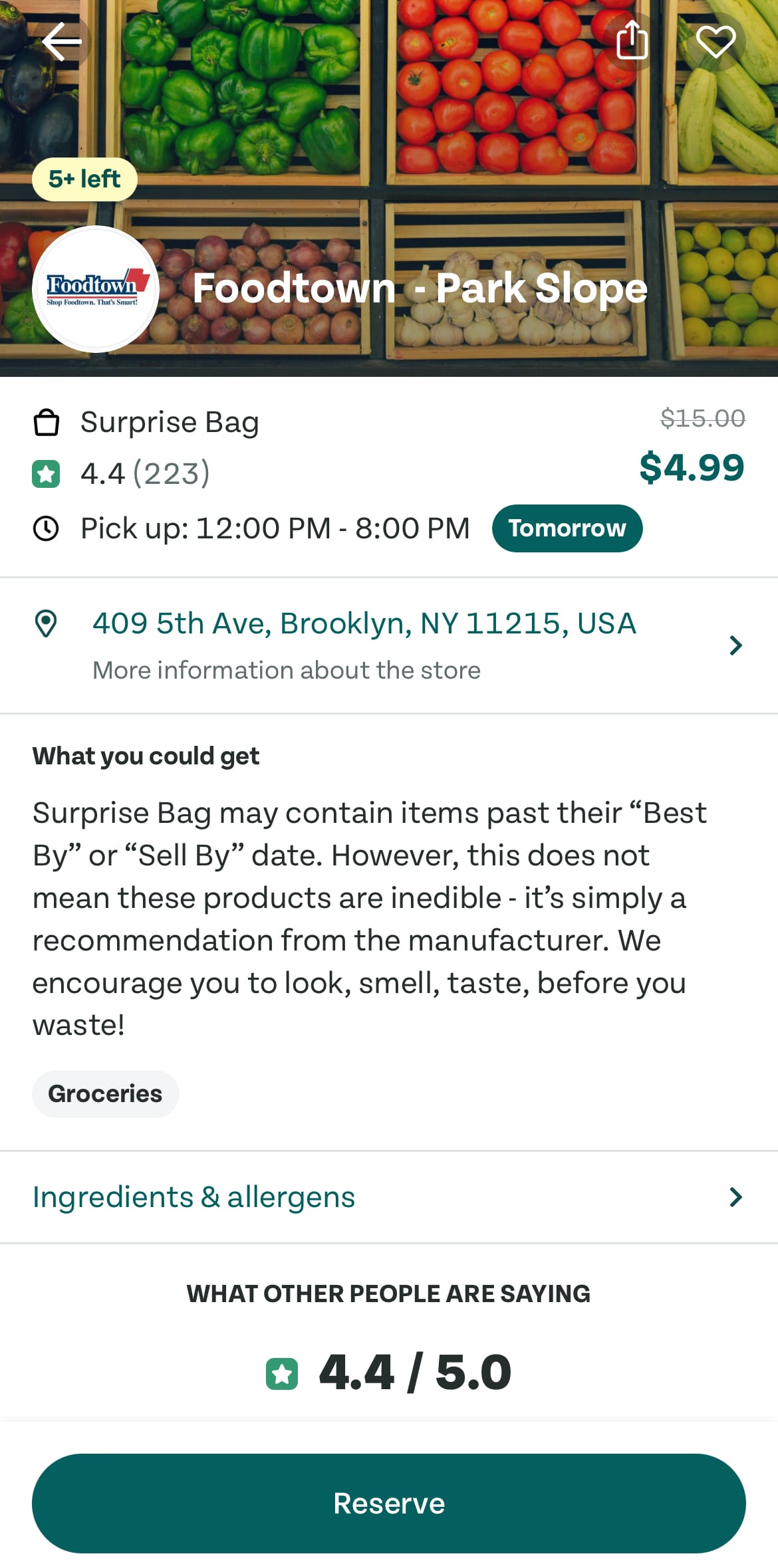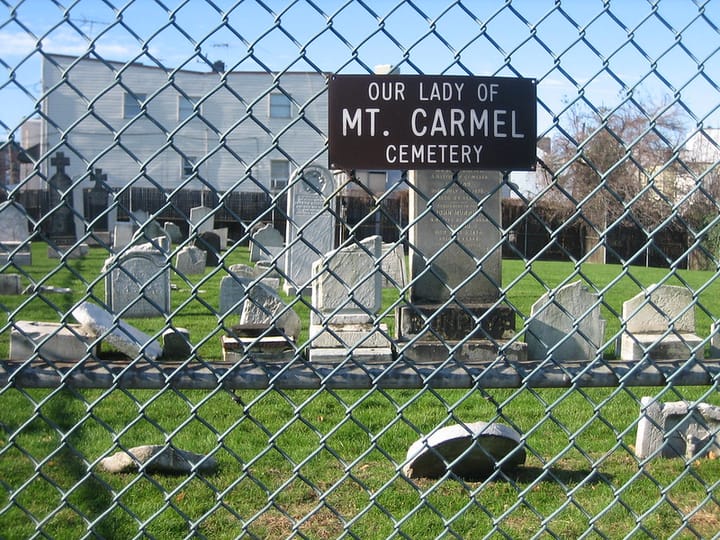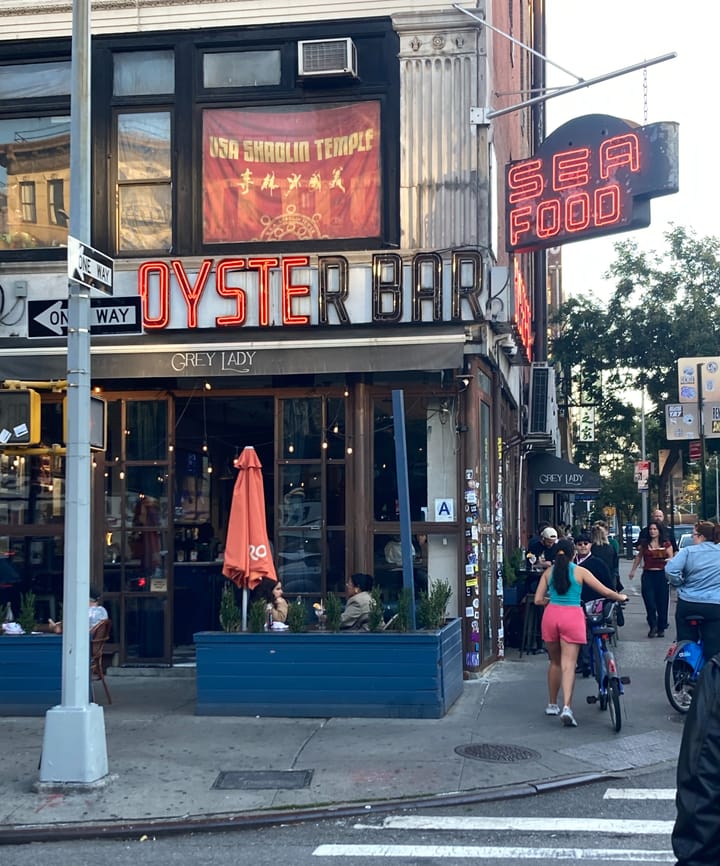Is Too Good To Go too good to be true?
How the hot new food-waste fighting app works, and how to make the most of it.

By Tim Donnelly
A few months ago I was having a bad day — brutally critiqued by a room of grad students, enlisted to help break up a bloody brawl on the F train — and needed a beer and a pizza. Hungry and rushing to meet people at a bar on Franklin Avenue in Brooklyn, I ran down the street to grab some slices from Screamers.The pizza shop was a minute closed, no slices to be found on its display shelves. I tried my luck anyway, opening the door and asking the worker if there was anything — please, I’m desperate — left.
He looked around and then tapped a box on top of the oven, telling me he had a few slices left that I could have for $10. Anything more than three slices would be worth it, so I agreed. I handed over $10 cash and lifted the lid to see that it contained more than a few slices — more like two whole pies’ worth of assorted slices, a sparkling vegan pizza treasure chest for the thrifty and hungry.
This was the yin and yang of a New York City day, going from nearly getting covered in blood on the subway to getting nearly free pizza. It’s the kind of day that might not look the same in the city soon now that Too Good to Go and similar apps are gaining in popularity, formally monetizing end-of-day leftovers like this.
Too Good To Go says its goal is to cut down on food waste across the globe: nearly one-third of all food goes to waste, and the app helped save 79 million “meals” across the world in 2022, according to its annual report. The deals are often a steal: a barely day-old artisan loaf, a baguette and some rolls from Bien Cuit for a third of the usual price; a bag of made-that-morning bagels for a few bucks; unsold pastries from a coffee shop. You can even pick up open wines and liquor bottles from restaurants.
It is, very clearly, an Uber for Dumpster diving. Other similar apps, such as Flash Food, are gaining in popularity in America, and several others are gaining momentum in Europe too.
“As someone who likes to challenge, I thought, ‘Could this food be redistributed? Could it be recycled?’ ” co-founder Jamie Crummie told the Guardian in July, referencing seeing giant trash bins overflowing with food. “As far as I could see, this food was just going to waste.”
I’ve used the app occasionally for a few months now and it undoubtedly feels good to get a bag of $15 worth of bagels for $5. But it also feels a little … off.
Using it makes me miss the joy of my after-hours Screamers savior and other instances like it. Does every minor neighborhood interaction need to be reduced to an app? (Elder millennials will remember when Foursquare turned the concept of “being a regular” into a soulless app game). Does every bit of excess food in our system need to be monetized? Will putting a price tag on leftovers actually discourage food waste, or just open up a whole new capitalistic vein to be mined?
The arc of an app’s lifetime is long but it bends toward junk eventually. Etsy, famously, was once a marketplace for handmade crafts and now it’s another dumping ground for low-quality factory made crap like everywhere else on the internet. Too Good To Go started in 2015 internationally and 2020 in North America, and it has undeniably good deals, but also a little bit of junk already.
The app talks about reducing waste, but reducing it comes with a price. Not all food “waste” is wasted, per se: mutual aid groups sometimes collect it, large charity groups and food banks often rely on end-of-day collections from retail stores for their supplies. New Yorkers built a robust system of community fridges during the pandemic that relied on donations — but those are struggling now too.
Food production (especially meat and dairy) is a major contributor to climate change. But like everything when it comes to the climate, the real focus needs to be not on what happens to the waste at the end — but on not creating the waste in the first place.

Is Too Good To Go hurting anyone?
I might have my personal hesitations, but after doing some investigating, the TGTG system seems to be working fine so far.
As soon as I tried the app, I wondered if it was having an effect on food donations across the city. I reached out to a few food banks and charities across the city and they said that’s not the case — yet, at least.
“We will be keeping an eye out,” Melony Samuels, founder and executive director of The Campaign Against Hunger, told The Groove. The bigger issue right now is that individual and corporate donations are down, she said.
Here’s why I personally worry donations could be affected down the line: I spent three years working at Trader Joe’s in Brooklyn in the late aughts, and we had hordes of dumpster divers who knew our schedule and would wait outside every night for the large trash bins to get rolled to the curb. Management wanted to change this — either from a true hatred of the dumpster divers, or a sincere desire to recycle more food (with corporations, you can never know for sure). The donations program was revamped and everything that could be donated was saved from the trash: expired meats, day-old bread, accidentally opened cookies, whatever. A church would pick them up and roll out with sometimes two or three full shopping carts of donations. Those carts would now represent missed revenue in the TGTG era (Trader Joe’s is not, as far as I can tell, on the app yet).
City Harvest, for instance, relies on donations of rescued food, many of the same items that can be resold through Too Good To Go, working with retailers to get products that can’t be sold in stores but are still perfectly usable. Meanwhile, food insecurity has been rising significantly over pre-pandemic levels, all while the Adams administration is logging huge delays in approving public assistance, and budget cuts threaten to harm those programs even more.
A spokesperson for New York Common Pantry said the organization reeled the hardest when companies closed their offices during the pandemic, which cut down a major source of food rescue, but aren’t worried about Too Good To Go yet. (Companies can use services such as Replate that donate excess catered lunches and the like to local food banks).
Others said that anything that reduces food waste helps make food cheaper overall, and helps out many of the city’s always-struggling businesses.
“The tools that help minimize small amounts have only been helpful,” said Matt Jozwiak, founder and CEO of Rethink Food, which both helps rescue food and works with restaurants to prepare meals for those in need. “Lowering the cost of food and minimizing excess is not only helpful — it’s mission aligned.”
I asked a few businesses that were selling through the app and the reviews were positive. A bagel shop told me they would have just sold the TGTG bagels as day-olds the next day. One bakery in Brooklyn told me that before the app, excess bread would either go into a trash bag, or a member of their team would take it upon themselves to contact a local mutual aid group to give it away.
“God bless the anarchists, because otherwise this would end up in the trash,” he said. Now, the app is a more reliable option for saving bread from the trash bin.
A few users have dealt with ethical questions around the app. One wrote on Reddit that they only use the app for fun surprises, not because they need to save money, and wondered if they should avoid it to let poorer people take advantage. A person who identified as unemployed and with very little savings replied, saying they shouldn’t be worried.
“Poor people aren’t buying toogoodtogo, buy as many bags as you want and help reduce food waste,” they wrote. “Groceries are a lot cheaper and more resourceful than risking spending what little income I have on a surprise bag.”

How to Too Good To Go like a pro
So far, using the TGTG seems like mostly a fun way to save money. One thing is certain: it’s a great place to get stale bread for Thanksgiving stuffing. If you want to dabble in this dapper Dumpster diving, here are a few tips:
Don’t miss the window: Spots will generally give you a one or two hour window toward the end of their day when you can pick things up. Go toward the beginning of the window for your best options.
Check Reddit: The Too Good To Go subreddit is pretty active, and will give you a sense of what kinds of hauls people are getting. Someone created a list just of New York City spots with good deals, calling out which ones offer reliably good hauls. Other users review the option and weigh in on whether it’s a good value — or if the restaurant is maybe taking advantage of the system. You can also read the horror stories, and hear about people who were able to get refunds for bad deals or moldy cheeses.
Bagel shops and bakeries are your friend: My partner picked up a TGTG from our local chain grocery store and it was full of moldy sandwiches and wilted prepared salads; another TGTG from a dubious “package-free” store was full of soft potatoes and a very mushy banana. Some places can be hit or miss, from rotten fruit to a bounty of decent produce and prepared foods, depending on the store. Another vegan cafe gave us just a few scones and muffins in a bag, not really a great haul. We noticed there was a huge line of TGTG bags behind the counter, which felt like not the point of the program: are we saving end-of-day food waste, or are you just producing a bunch of extra baked goods to make a few extra bucks?
But bagel shops and bakeries are almost always a hit. End-of-the-day bagels have a few days of life in them still; even stale bread loaves can be brought back to life in a few minutes. Any pizza place is going to be a good bet too.
Try it when out and about: A fun part of the app is that you can open it up when you’re in any part of the city and just see if there’s a deal near you. One Queens blogger wrote about how she uses it to discover new restaurants and stores in her neighborhood. Drunk in Woodside? Maybe you too can snag a cheap four-piece pork satay meal.
Cancel if you can’t make it: This is food waste, not your ex roommate’s boyfriend’s 33rd birthday party. TGTG asks that you cancel at least three hours in advance if you can’t pick up your bag so that someone else can claim it. Otherwise, it goes to the trash after all.
Just donate your food regular: If you own a food business and app-ifying food waste feels yucky to you, just donate your food the regular, free way. City Harvest will pick up food from your business, find out how to do that here. Those community fridges still need stocking too.




Comments ()